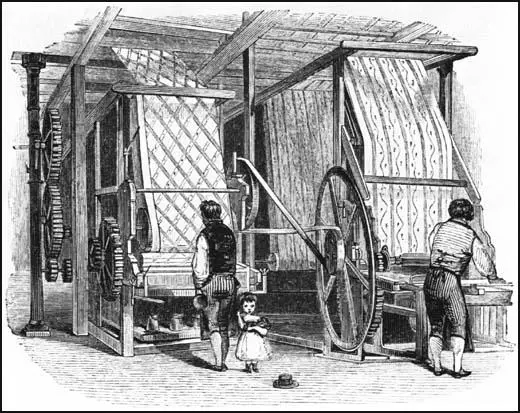Cylinder Printing
The printing of cloth began in the early 1750s. Both wooden blocks with patterns cut in relief, and copper plates, with engraved patterns were used. In his book The History of the Cotton Manufacture (1835), Edward Baines claims that printing with engraved copper rollers was invented by Joseph Bell and was first used by Livesey, Hargeaves, Hall & Co at Livesey, near Preston.
The engraved printing cylinder was placed horizontally with another cylinder above it. The bottom of the lower cylinder took up the printing colour from a trough, the excess being scraped off by a closely fitting steel blade. The cloth passed between the cylinders and then over several steam-heated drying boxes. Complex colour patterns could be achieved by using more than one printing cylinder.

An Illustrated Itinerary of the County of Lancaster (1842)
Primary Sources
(1) John Brown, A Memoir of Robert Blincoe (1828)
A girl named Mary Richards, who was thought remarkably handsome when she left the workhouse, and, who was not quite ten years of age, attended a drawing frame, below which, and about a foot from the floor, was a horizontal shaft, by which the frames above were turned. It happened one evening, when her apron was caught by the shaft. In an instant the poor girl was drawn by an irresistible force and dashed on the floor. She uttered the most heart-rending shrieks! Blincoe ran towards her, an agonized and helpless beholder of a scene of horror. He saw her whirled round and round with the shaft - he heard the bones of her arms, legs, thighs, etc. successively snap asunder, crushed, seemingly, to atoms, as the machinery whirled her round, and drew tighter and tighter her body within the works, her blood was scattered over the frame and streamed upon the floor, her head appeared dashed to pieces - at last, her mangled body was jammed in so fast, between the shafts and the floor, that the water being low and the wheels off the gear, it stopped the main shaft. When she was extricated, every bone was found broken - her head dreadfully crushed. She was carried off quite lifeless.
